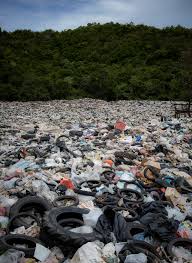Energy is used to transform raw materials into a corrugated cardboard box. The first consideration for the box in a waste management planning process is to look at strategies for source reduction, or not using the box at all, if it represents excessive packaging (or using alternative packaging which requires fewer raw materials and less energy to manufacture; or packaging which is more readily re-usable or recyclable, etc.)
After unpacking the TV set that was delivered in the box, the Smiths discard it into the waste stream. The box’s utility/value derives from the properties of its current ordered state (rectangular, dry, strong, closeable, etc.)
The highest and best use for the box is to re-use it again as a box. The management strategy would then be to keep the box from becoming crushed, wet or otherwise damaged, in order to reuse it as packaging several more times
If it is already crushed, the next best thing is to recycle it — to expend new energy to transport it to a paper mill and process it into a new product, then re-sell it, etc
If it can’t be recycled for some reason, several options are available which limit the use of the box’s energy to a one-time recapture.
The box might be composted for use as a soil amendment; made into refuse-derived fuel to be burned in a boiler for its energy value; or it might be mass-burned (incineration with energy recovery) together with mixed solid waste to produce steam or electricity
The next choices are simply to reduce the volume of the waste before disposal. Baling the box is one option, as is burning it without energy recovery, just to reduce the volume to ash
Read Also : Concept Integrated Waste Management (IWM)
Finally, after all else has been considered or done, land filling (burial) is the last resort. Not only will the box exit the loop of economic usefulness, but it may become part of a pollution problem and, at least, occupy costly landfill space
When we choose a waste management option for the box after it has been used once.
Goal No.1 of IWM is to retain as much of its current usefulness as possible in order to avoid having to use the same amount of wood pulp and energy to make another box to do the same job again.
Goal No. 2 is to keep the energy-matter represented by that box tied up in a useful product and not released as a pollutant (which the box might become if it ends up along a roadside as litter, or buried in a landfill where its usefulness will be forgone indefinitely).

Fig.©: Box Potential According to the IWM Hierarchy

